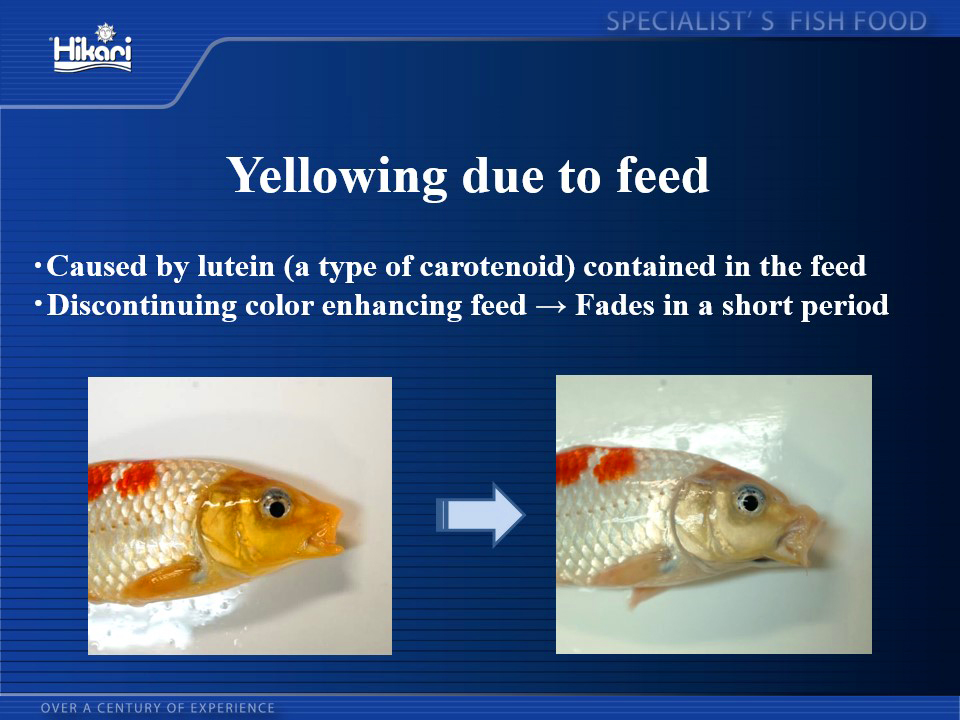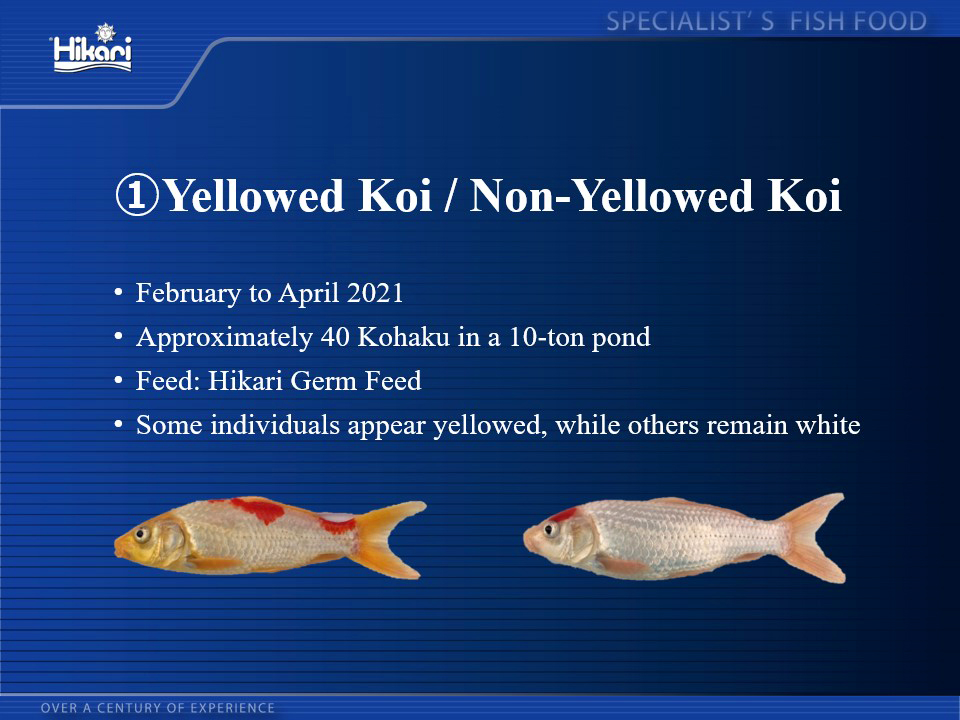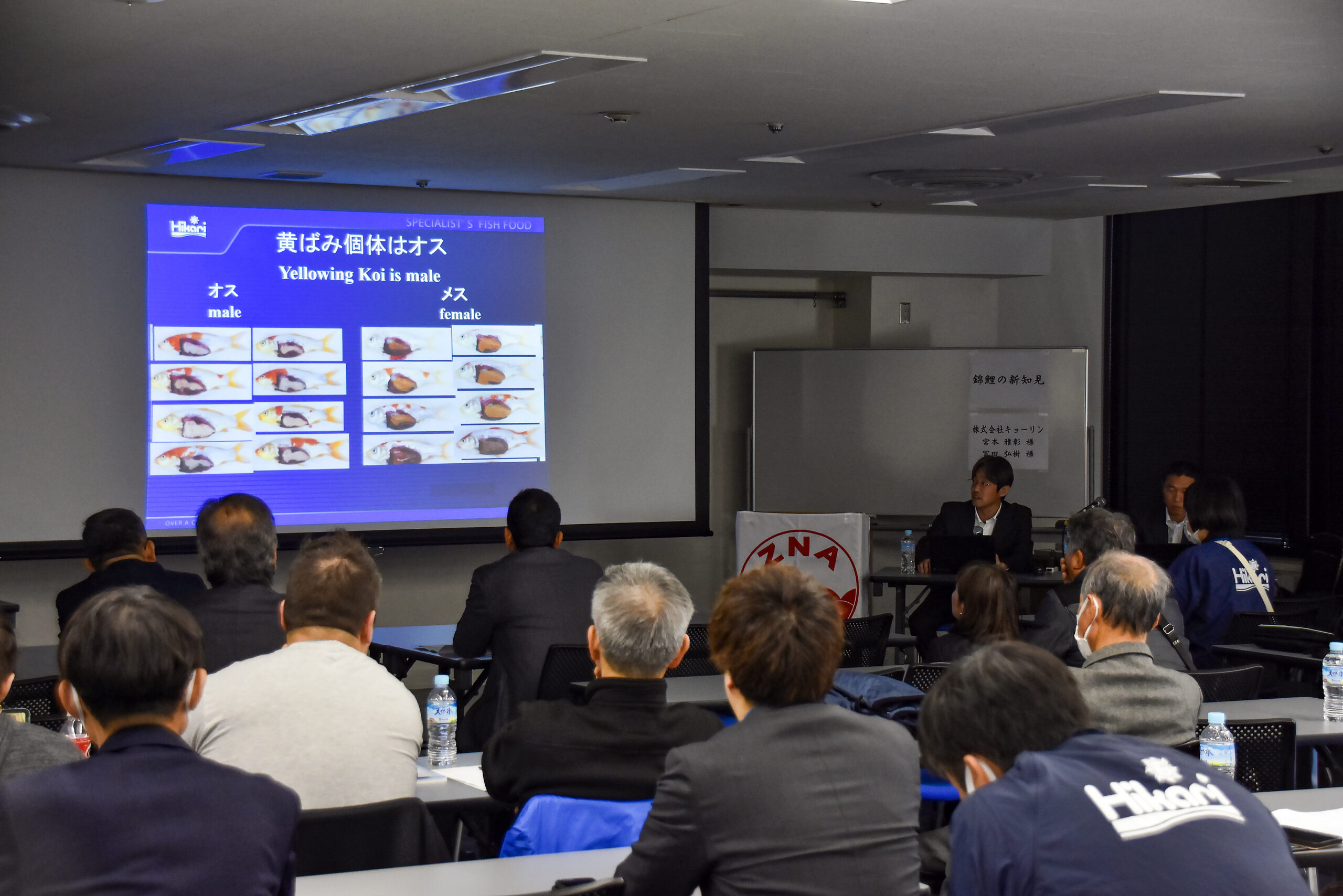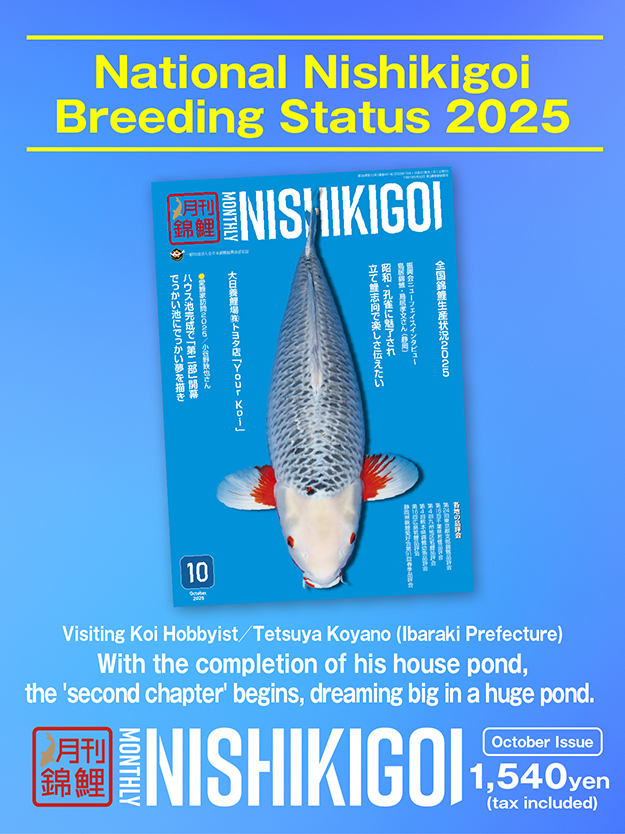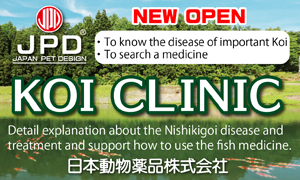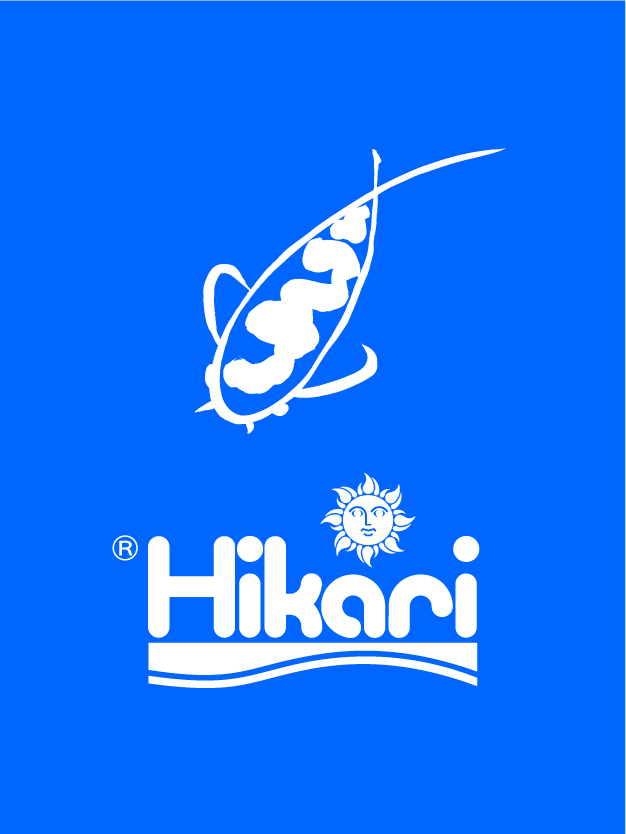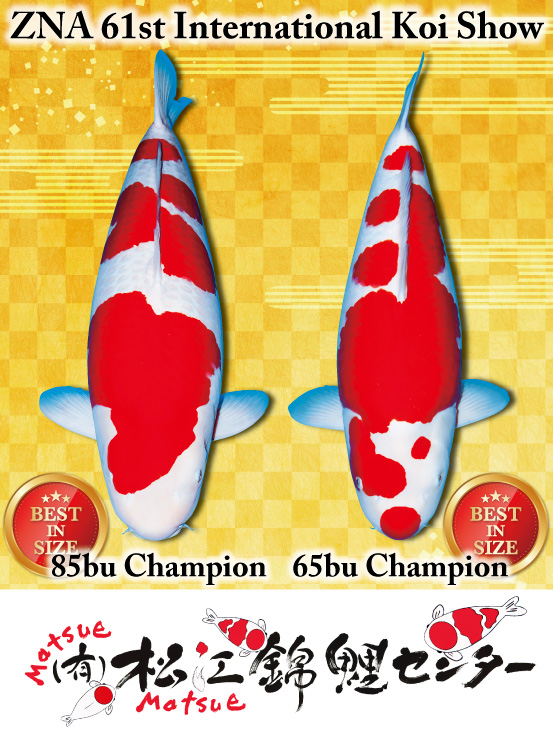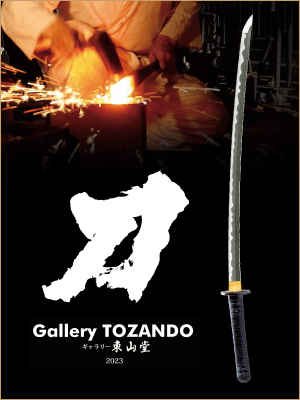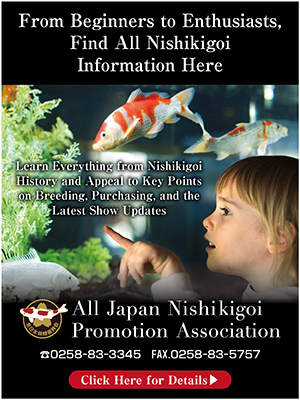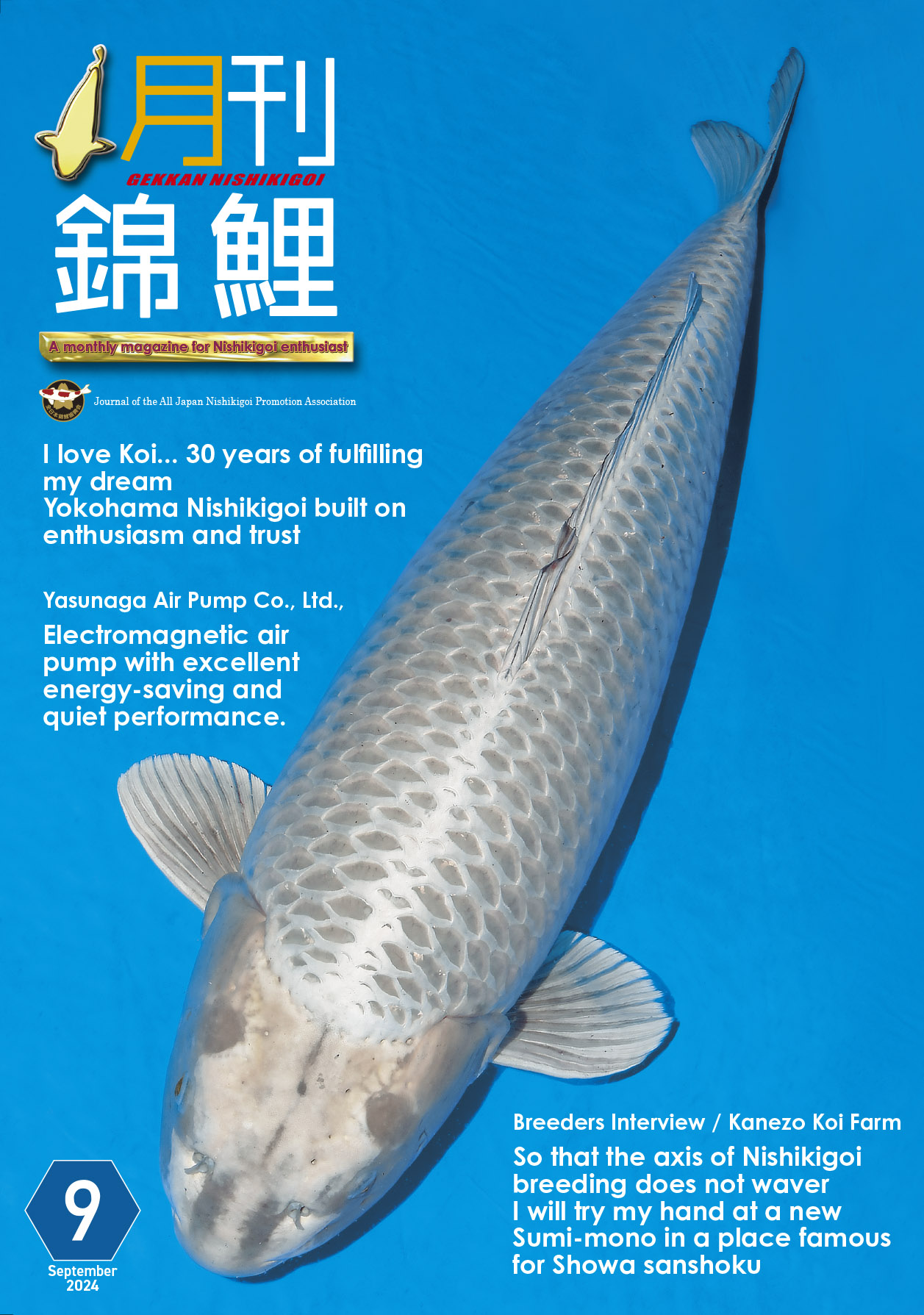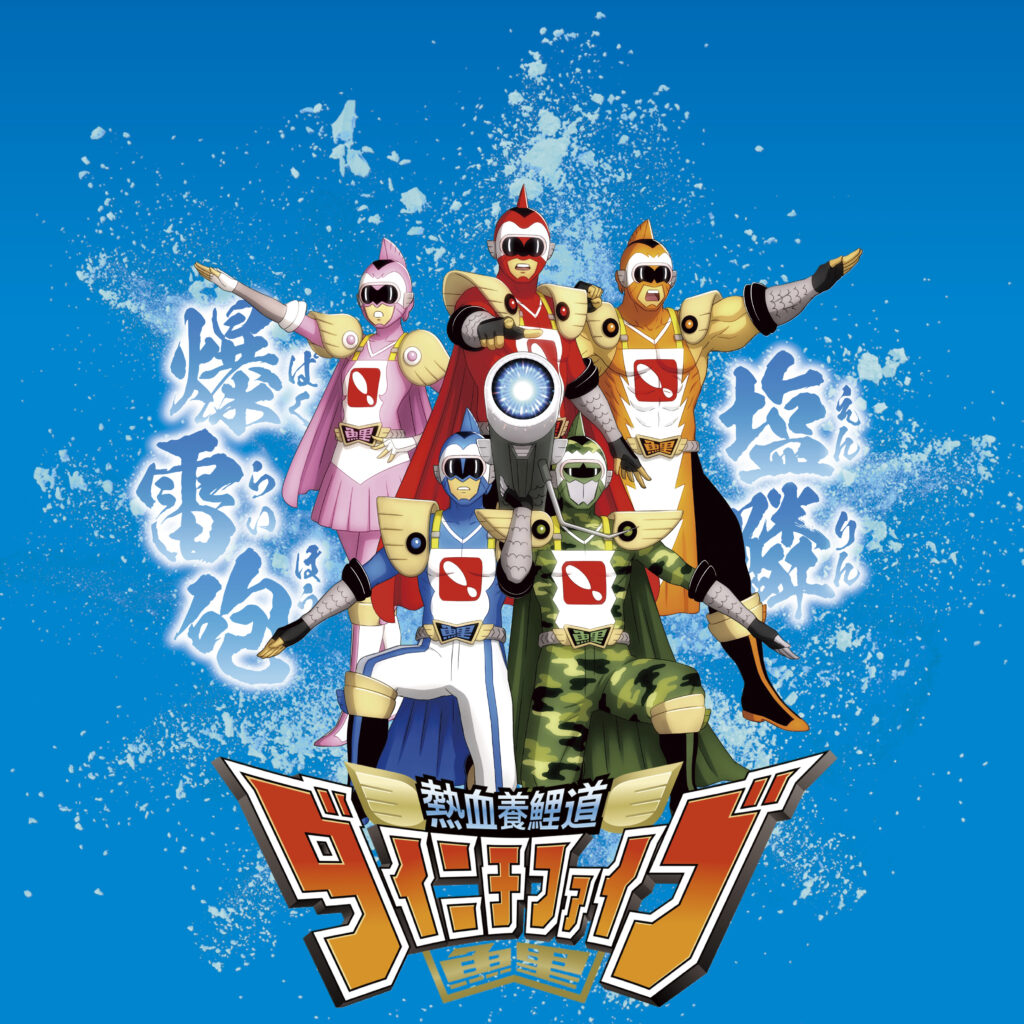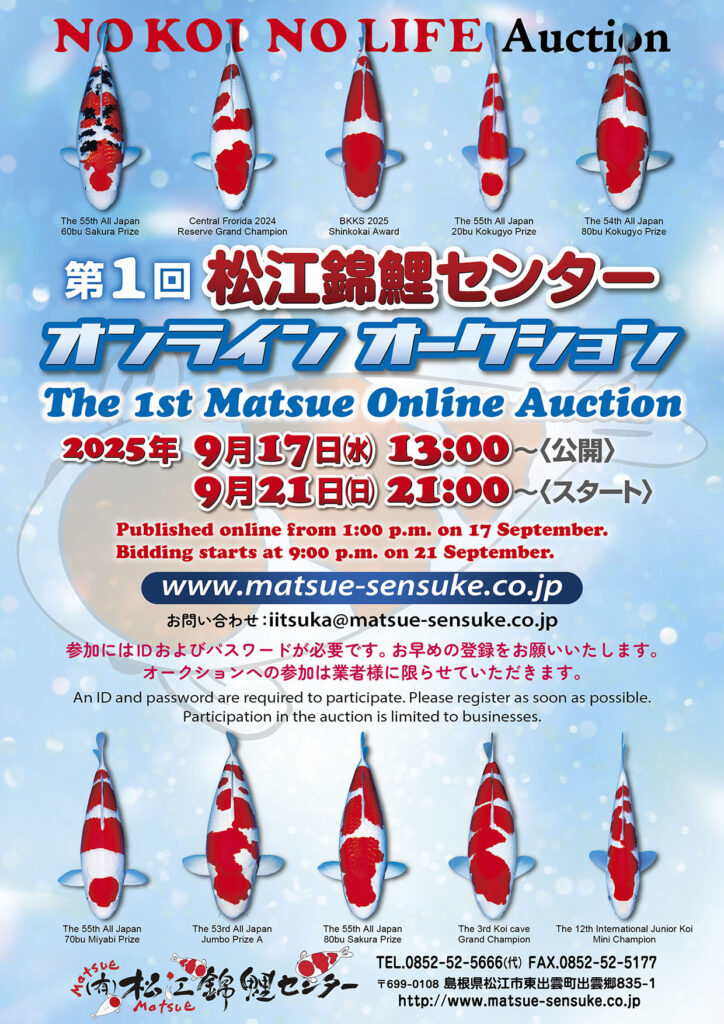Zen Nipppon Airinkai(ZNA) Seminer/Kyorin
New Insights into Koi – Learning from Research Data on “Yellowing,” “Pond Culture,” and “Feed Efficiency”
Kyorin Co., Ltd. sells koi feed, with “Saki Hikari” being one of its flagship products. New feed development and fish disease testing are conducted daily at the Hikari Aquatic Laboratory in Shiso City, Hyogo Prefecture (①). We are developing a new koi feed with enhanced functionality, aiming to create products that can demonstrate their effectiveness through data. Please look forward to our future products.
Until now, the laboratory has conducted experiments using tanks. However, due to limitations on the size of fish that could be raised and differences in environmental conditions compared to ponds, eight 10-ton experimental ponds were constructed six years ago. (②). Building new ponds allowed us to handle larger koi in an environment closer to actual breeders.
At the laboratory, we not only develop feed but also conduct fundamental tests to gain new insights into koi. Today, I will share some of the findings from these studies. I hope you can take away at least one helpful tip for koi breeding from these results.
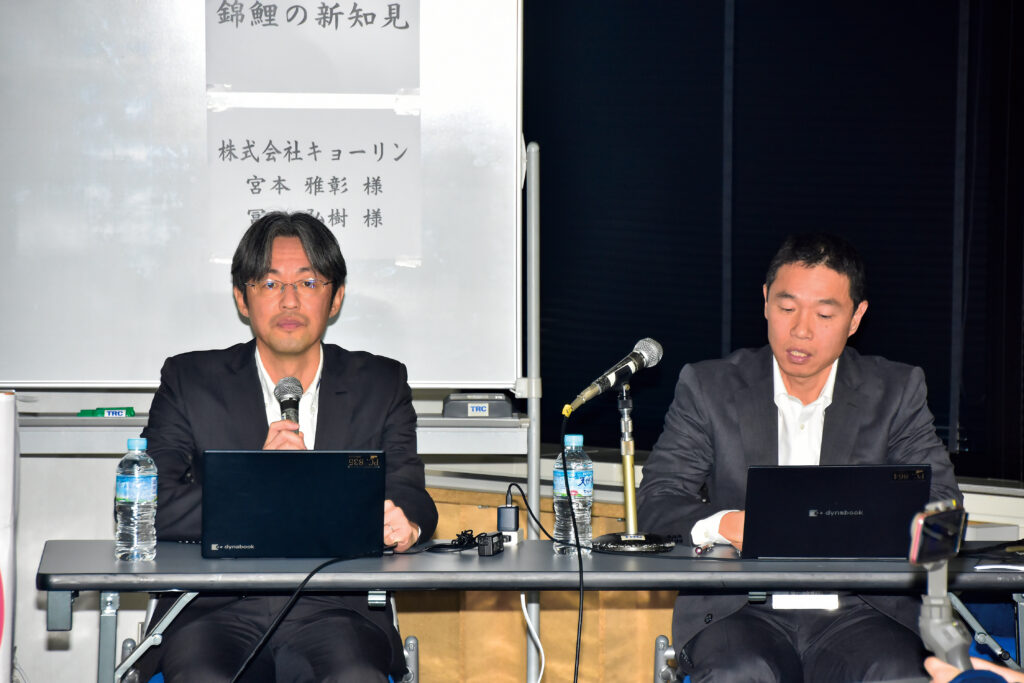

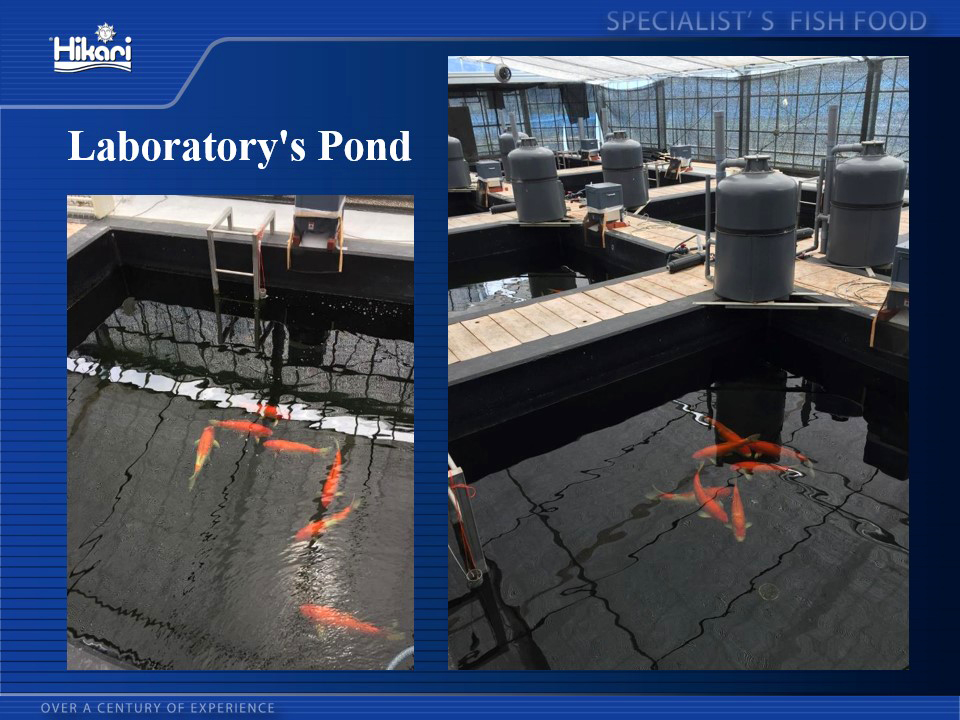
【Yellowing】
First, we examined about the yellowing of Nishikigoi (③). As you may know, feeding colour-enhancing food not only enhances the beni but also causes the white areas (shiroji) to turn yellow. This is mainly caused by ‘lutein,’ a yellow pigment contained in the feed. The degree of yellowing caused by colour-enhancing feed varies depending on the ingredients, but our company’s colour-enhancing feed uses materials that are relatively resistant to yellowing. Additionally, it is known that when feeding is stopped, the yellowing tends to fade relatively quickly.
Today, we’ll discuss yellowing that isn’t caused by food. we’ll explain the differences between koi prone to yellowing and those not and when the susceptible periods for yellowing occur.
In a 10-ton experimental pond, we raised Kohaku without feeding them any colour-enhancing food. However, we discovered that some koi had yellowing while others did not (④)
